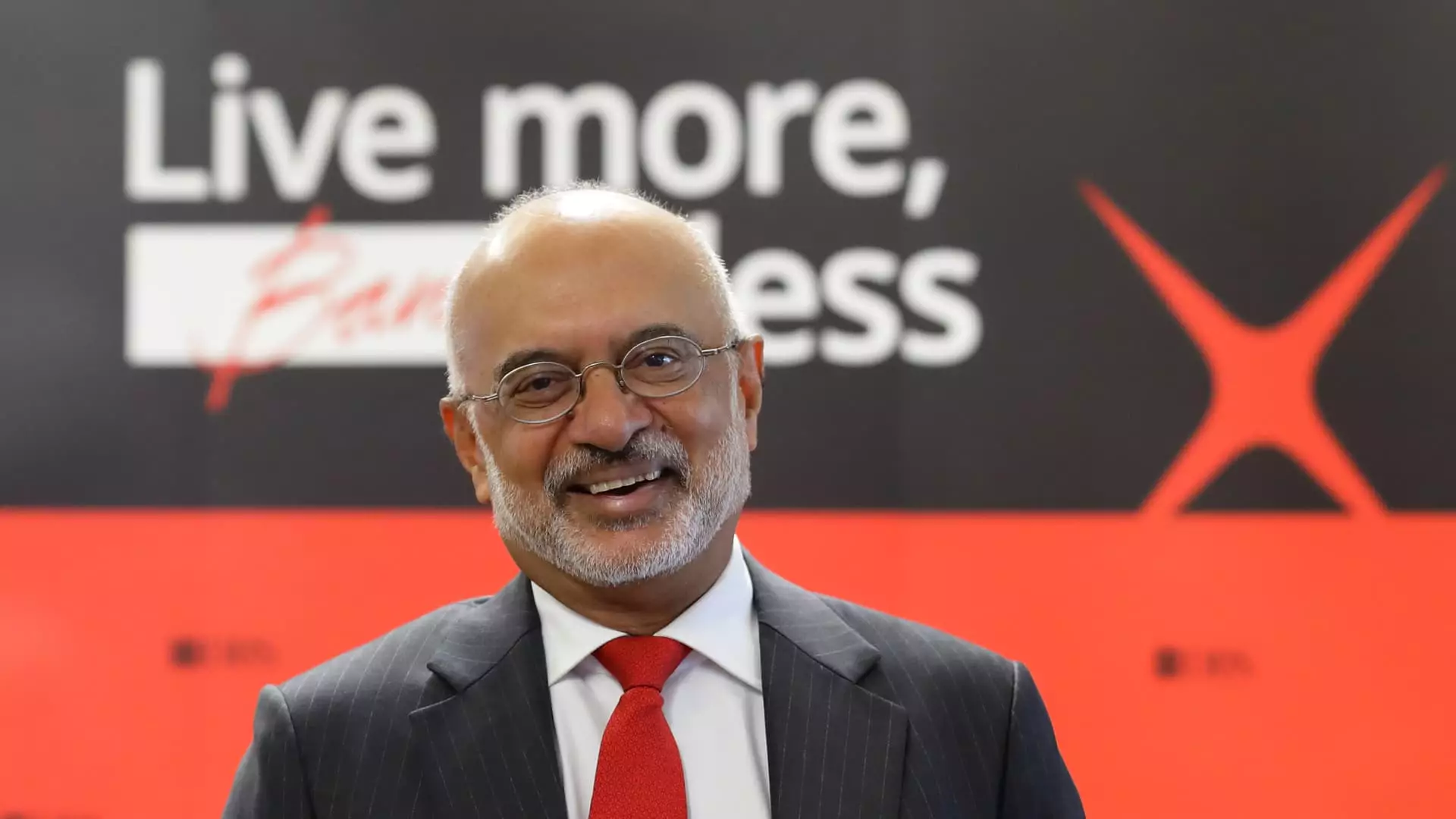In the world of banking, adaptability is paramount, especially in the face of volatile economic landscapes. After a remarkable performance in 2024, during which DBS Bank emerged as Southeast Asia’s largest bank by assets with record net profits, the CEO, Piyush Gupta, has urged for a strategic approach as they brace for challenges in 2025. Gupta’s acknowledgment of the unpredictable nature of global economic policies, particularly those stemming from the U.S., highlights a crucial aspect of modern banking: the need for agility and foresight.
Record Profits and Growth Dynamics
DBS Bank’s financial performance for the fiscal year ending December 31 has been nothing short of exceptional. With net profits soaring to 11.4 billion Singapore dollars (approximately $8.4 billion), marking an impressive 11% increase, alongside a 10% rise in revenue to SG$22.3 billion, the bank has solidified its stance in the financial sector. These figures are not mere statistics; they reflect a well-rounded growth strategy encompassing various revenue streams. Notably, record-high fee income and increased treasury sales played a pivotal role in this growth trajectory.
However, while the figures radiate success, it is essential to dissect the components that contributed to this performance. The bank’s net interest income—critical for any financial institution—accounted for SG$15.04 billion, growing by 5% year-on-year. Such metrics, though laudable, mask a broader question: how sustainable is this growth in a period marked by shifting monetary policies, particularly in the U.S.?
The Impact of U.S. Economic Policies
Gupta’s caution regarding the potential economic tools that the Trump administration may wield as weapons, particularly in terms of tariffs and tax policies, deserve significant contemplation. The repercussions of these policies extend far beyond U.S. borders, impacting global trade dynamics and, subsequently, banking operations in regions like Southeast Asia.
DBS’s projections for 2025, which originally foresaw four interest rate cuts by the U.S. Federal Reserve, have been recalibrated to two cuts. This shift underscores the uncertainty that looms over interest income, making it a challenging variable to predict. The bank’s ability to navigate these impending economic currents will critically depend on its strategic responses—not just to U.S. policies but also to regional economic developments.
In the aftermath of a lucrative fiscal year, DBS Bank’s commitment to returning capital to shareholders has also come to the forefront. The decision to propose a final dividend of 60 Singapore cents per share, a marked increase from the previous year, alongside a new “capital return” dividend of 15 cents per quarter for 2025, reflects the bank’s strategy to manage excess capital while rewarding its shareholders.
With a current capital adequacy ratio standing at an impressive 17%, well above the bank’s operating range of 13%, DBS appears to have positioned itself solidly within regulatory requirements while ensuring that a surplus is judiciously returned to investors. However, this tactical decision raises questions regarding the sustainability of such payouts should economic conditions worsen or if innovative investment opportunities arise.
As Gupta prepares to transition CEO responsibilities to deputy CEO Tan Su Shan during the bank’s annual general meeting, the significance of this leadership change cannot be understated. Gupta’s tenure has been marked by transformative growth and strategic foresight, shaping DBS into a formidable player in the banking sector. Tan’s leadership style and vision will be pivotal as the bank addresses upcoming challenges and continues to evolve within an ever-changing economic landscape.
The anticipation surrounding DBS Bank’s performance in 2025 will hinge on multiple factors, including the agility and responsiveness of its leadership to external economic shocks, regulatory developments, and competitive pressures. While the bank has laid a commendable foundation through its impressive financial results, the dynamic and unpredictable nature of global economic policies underscores a continuing narrative—one where adaptability, strategic foresight, and shareholder engagement will be crucial for sustained success and growth.

